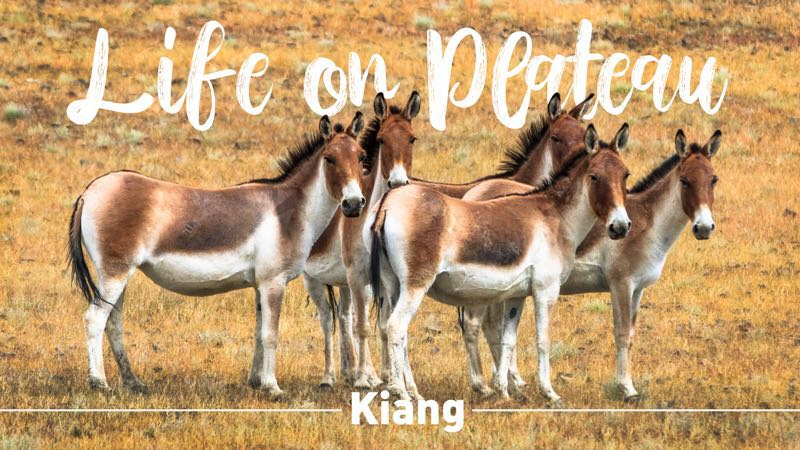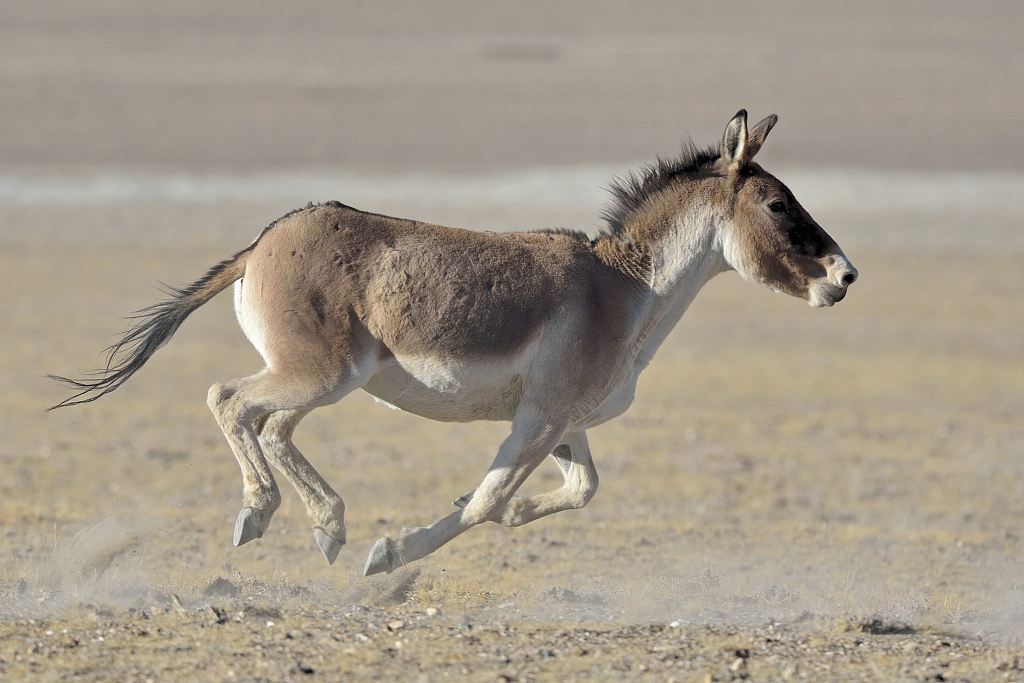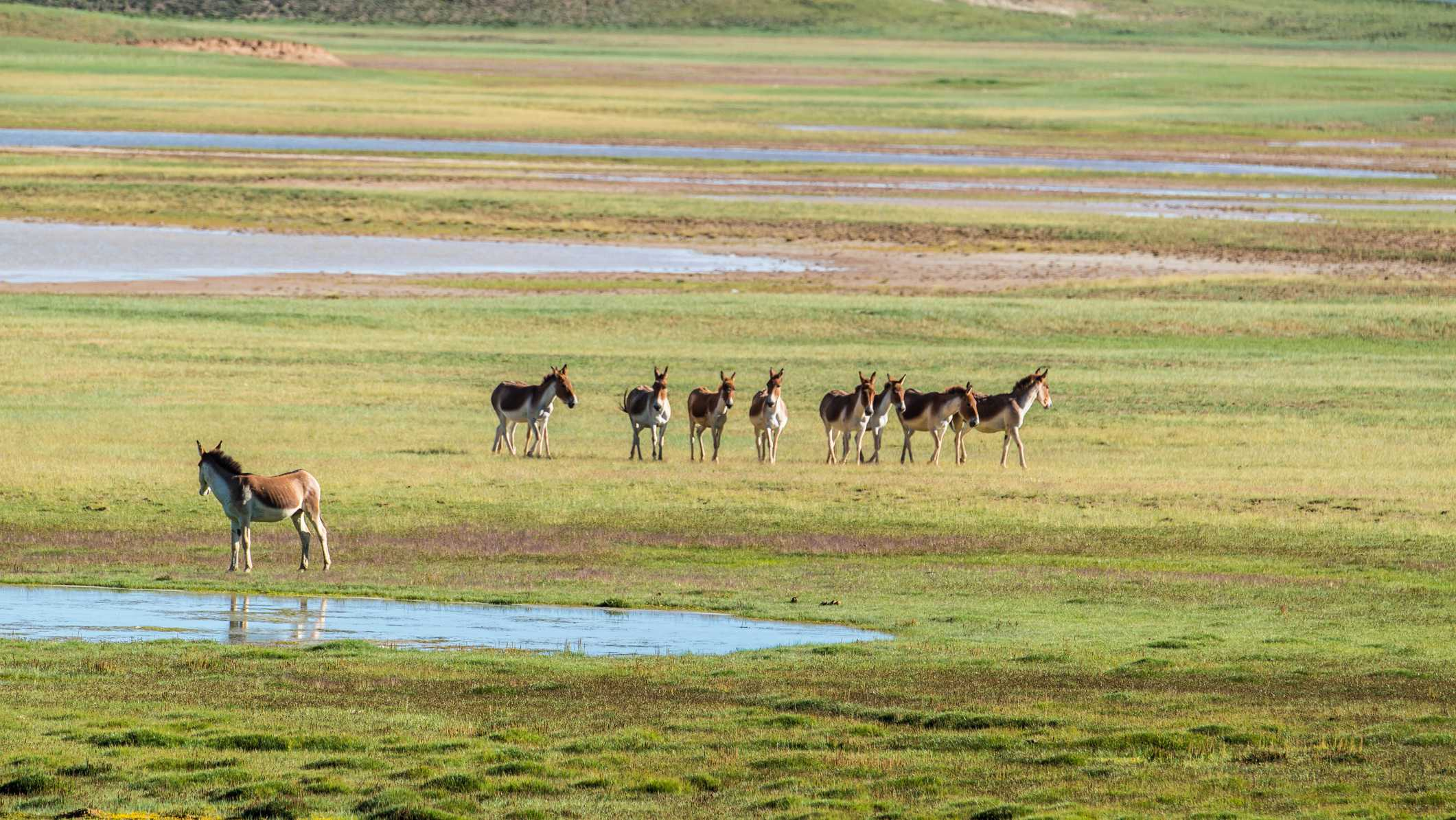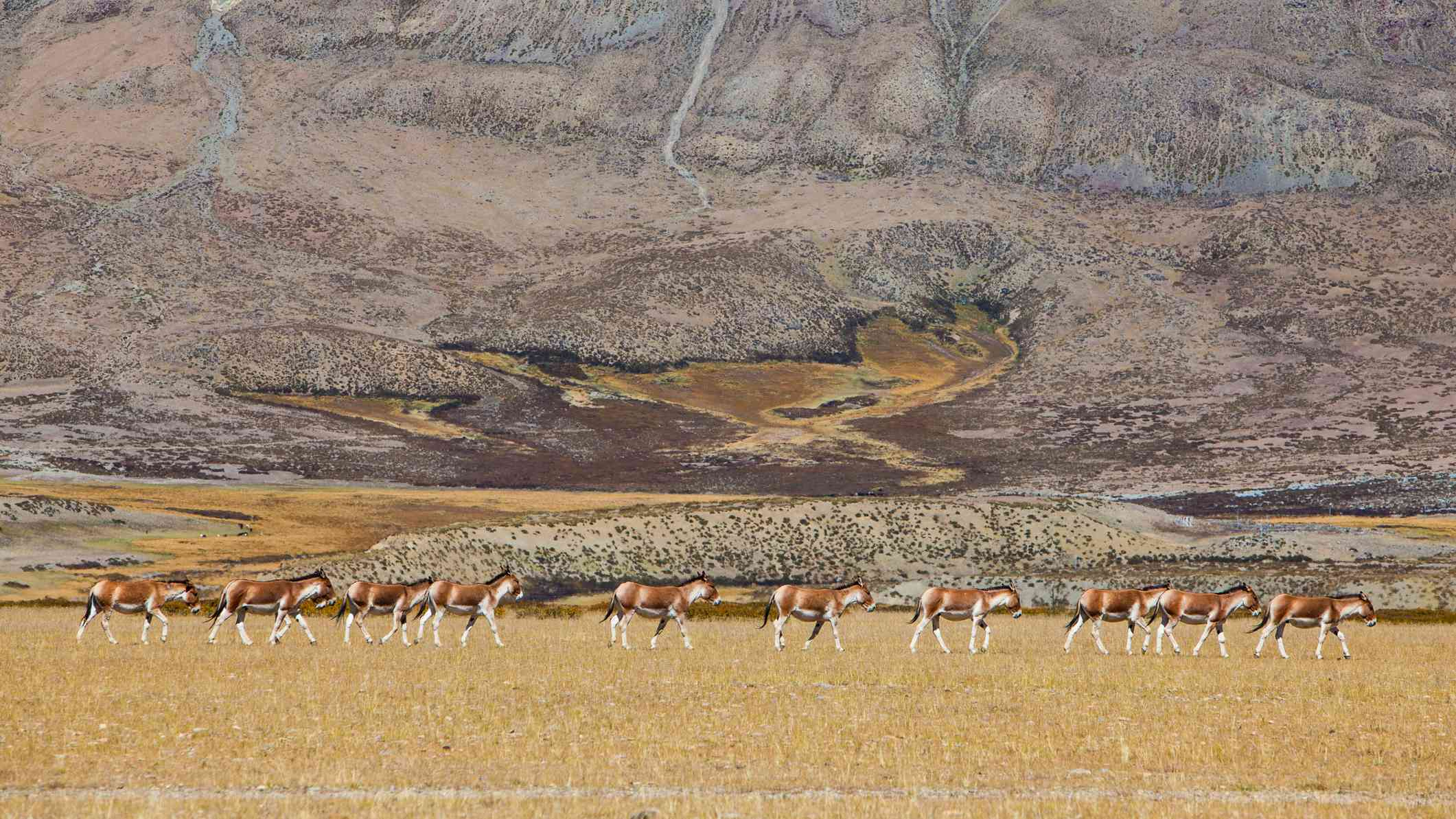
Nature
15:32, 29-Apr-2019
Life on Plateau: The wild ass with a big appetite
By Zhao Ying
00:36

In Changtang on the Tibetan Plateau, kiangs are often seen running on the vast alpine meadow. Bold and powerful, they are not afraid of unexpected visitors. They sometimes stand still staring at people with curiosity or even chase after SUVs instead of fleeing.
The kiang, or Tibetan wild ass, has probably lived on the Qinghai-Tibet plateau for thousands of years. Now, its closest relative, the Mongolian wild ass, mainly inhabits the northern Gansu Province and the Inner Mongolia Autonomous Region, which are hundreds of kilometers away.

A kiang. /VCG Photo
A kiang. /VCG Photo
With a disproportionately big head, the kiang is the largest of the wild asses. It usually weighs 250 to 360 kilograms, almost the weight of three to four adult men. During the dry season, the animal can survive without drinking water for several days. It is also good at digging wells at places where the underground water level is high. These wells are called “donkey wells” by locals.
In summer, the kiang wears a dashing reddish brown coat. The fur will grow darker and thicker in the winter. Every July and August, baby kiangs are born after staying in their mothers' wombs for almost one year. During this time, kiangs usually form smaller groups of less than 20.

The Tibetan kiang in northwest China's Qinghai Province. /VCG Photo
The Tibetan kiang in northwest China's Qinghai Province. /VCG Photo
Starting from mid-September, kiangs would gather into larger groups of over 50 and search for a meadow of good quality. As herbivores, they feed on grasses and sedges, especially stipa. Thus, they are most often seen in alpine meadows and alpine steppes where these needle grasses are abundant.
Due to the improving ecological environment and effective protection, the number of kiangs has risen from 50,000 in the 1990s to 80,000 in 2018, according to a Tibetan white paper released in March.

Kiangs on the plateau. /VCG Photo
Kiangs on the plateau. /VCG Photo
The increasing population makes herders worry whether this wild ass has taken away the food for their livestock, though this would require further study. Because of its big size, the kiang has to eat plenty of grasses to sustain enough energy. According to research, 70 kiangs can eat over 200 kilograms of hay in a single day, which equals to the daily intake of 200 goats.
Even though the animal is under first-class state protection, the kiang has rarely been studied. It's unclear whether the kiangs' overall consumption in the region is larger than livestock because the population of kiangs is still way smaller than that of livestock.

A lone kiang (Equus kiang), the largest of the wild asses, spotted in Nyima County, Nagqu Prefecture, Tibet, China. /VCG Photo
A lone kiang (Equus kiang), the largest of the wild asses, spotted in Nyima County, Nagqu Prefecture, Tibet, China. /VCG Photo
If future research confirms the herders' fears, then compensation for herders would have to be considered by local governments similar to the protection offered to snow leopards.
Protecting wildlife is a noble cause on paper. When it comes to real people sharing the land, water and other resources with wildlife, conflicts of interest are unavoidable. The situation demands wisdom by policymakers in balancing competing interests.
(Top image is designed by CGTN's Liu Shaozhen. The video is credited to “The Himalayan Vultures” from CCTV Documentary.)
(If you want to contribute and have specific expertise, please contact us at nature@cgtn.com.)

SITEMAP
Copyright © 2018 CGTN. Beijing ICP prepared NO.16065310-3
Copyright © 2018 CGTN. Beijing ICP prepared NO.16065310-3